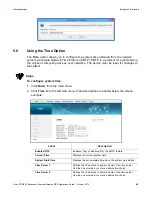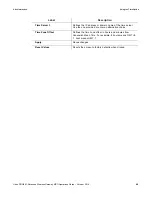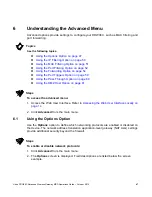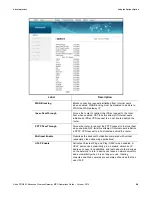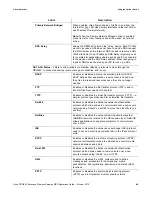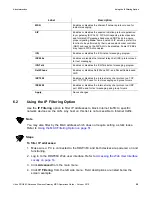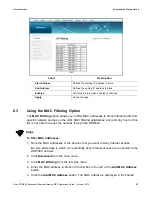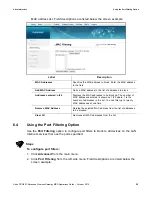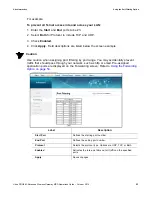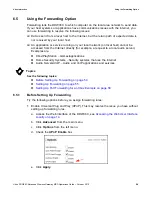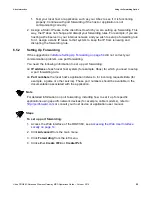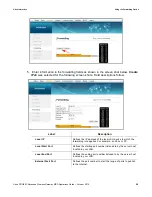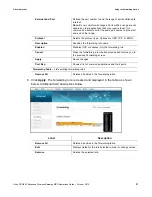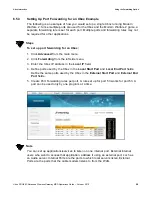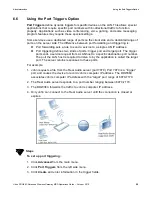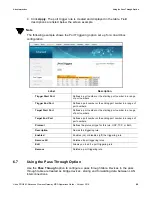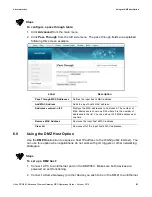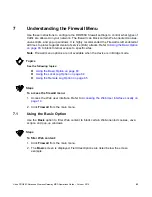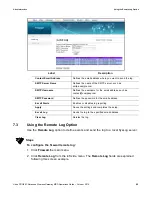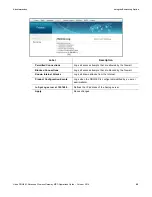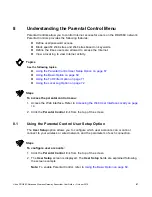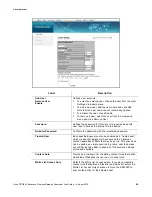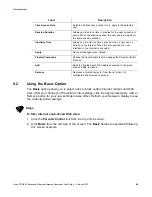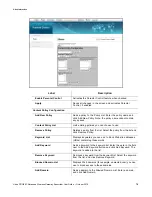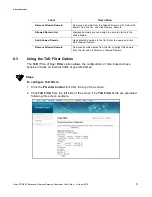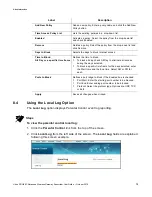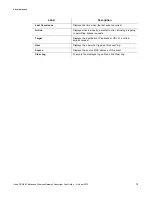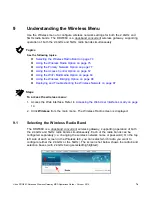
Ubee Interactive
Using the Port Triggers Option
Ubee DDW36C Advanced Wireless Gateway MSO Operations Guide • October 2015
59
6.6
Using the Port Triggers Option
Port Triggers
define dynamic triggers for specific devices on the LAN. This allows special
applications that require specific port numbers with bi-directional traffic to function
properly. Applications such as video conferencing, voice, gaming, and some messaging
program features may require these special settings.
Some services use a dedicated range of ports on the client side and a dedicated range of
ports on the server side. The difference between port forwarding and triggering is:
Port forwarding sets a rule to send a service to a single LAN IP address.
Port triggering defines two kinds of ports: trigger port and target port. The trigger
port sends a service request from a LAN host to a specific destination port number.
The port the LAN host is required to listen to by the application is called the target
port. The server returns responses to these ports.
For example:
1. John requests a file from the Real Audio server (port 7070).
Port 7070 is a “trigger”
port and causes the device to record John’s computer IP address. The DDW36C
associates John's computer IP address with the “target” port range of 6970-7170.
2. The Real Audio server responds to a port number ranging between 6970-7170.
3. The DDW36C forwards the traffic to John’s computer IP address.
4. Only John can connect to the Real Audio server until the connection is closed or
expires.
Steps
To set up port triggering:
1. Click
Advanced
from the main menu.
2. Click
Port Triggers
from the left side menu.
3. Click
Create
and enter information in the trigger fields.

